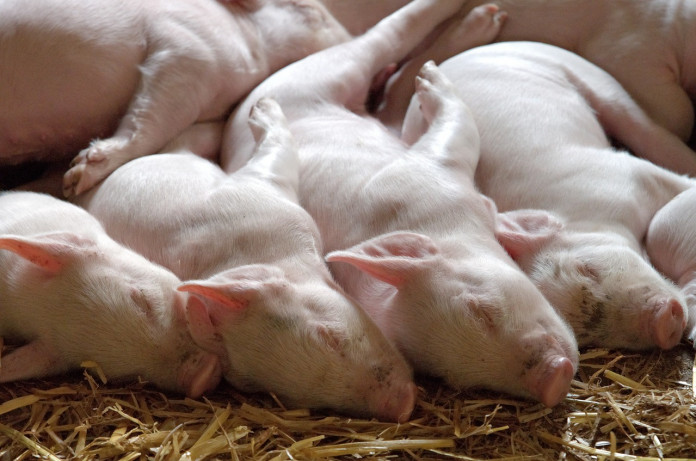The USDA’s Risk Management Agency offers protection to livestock producers in two main policy types: Livestock Gross Margin (LGM) and Livestock Risk Protection (LRP).
1Livestock Gross Margin
Provides protection against loss of gross margin (market value of livestock minus feed costs). LGM policies are available for cattle, dairy and swine.
Dairy. LGM-Dairy provides protection when feed costs rise and milk prices drop. Gross margin is the market value of milk minus feed costs. LGM-Dairy uses futures prices for corn, soybean meal, and milk to determine the expected gross margin and the actual gross margin.
LGM-Dairy is not available for producers enrolled in the Farm Service Agency Margin Protection Program for Dairy (MPP-Dairy).
You can sign up for LGM-Dairy 12 times each year and insure all of the milk production that you expect to market over a rolling 11-month insurance period. The indemnity at the end of the 11-month insurance period is the difference, if positive, between the gross margin guarantee and the actual gross margin.
Swine. LGM-Swine provides protection against the loss of gross margin (market value of livestock minus feed costs) on swine and uses futures prices to determine gross margin and the actual gross margin.
You can insure swine you expect to market 12 times a year. Each insurance period is six months long and overlaps other insurance periods. The indemnity at the end of the six-month insurance period is the difference, if positive, between the gross margin guarantee and the actual gross margin.
Cattle. LGM-Cattle provides protection against the loss of gross margin (market value of livestock minus feeder cattle and feed costs) on cattle and uses futures prices to determine the expected gross margin and the actual gross margin.
The indemnity at the end of the 11-month insurance period is the difference, if positive, between the gross margin guarantee and the actual gross margin.
2Livestock Risk Protection
Provides protection against price declines and includes policies for cattle, lambs, and swine.
Fed and feeder cattle. LRP-fed or feeder cattle policies are available throughout the year with coverage prices ranging from 70-100 percent of the expected ending value.
Producers submit a one-time application for LRP-fed cattle or LRP-feeder cattle and then choose specific endorsements for up to 2,000 head of heifers or steers (weighing between 1,000 and 1,400 pounds) to be marketed at the end of the insurance period. The annual limit is 4,000 head per producer for each crop year (July 1-June 30).
The length of insurance coverage available for each specific coverage endorsement is 13, 17, 21, 26, 30, 34, 39, 43, 47, or 52 weeks.
Lamb. Sheep producers can choose from a variety of coverage levels and insurance periods. LRP-Lamb can be bought weekly. Coverage prices range from 80-95 percent of the expected ending value.
Producers submit a one-time application for LRP-Lamb and then choose specific coverage endorsements. Each endorsements is limited to 2,000 head (to be marketed at the end of each insurance period) with an annual limit of 28,000 head per producer for reinsurance year (July 1-June 30).
Length of coverage for endorsements is available in 13-, 26-, or 39-week policies. Lambs covered must be feeder or slaughter animals expected to weigh between 50-150 pounds by ending period.
Swine. LRP-swine policies are available throughout the year with coverage prices ranging from 70-100 percent of the expected ending value.
Producers submit a one-time application for LRP-swine and then choose specific endorsements for up to 10,00 hogs to be marketed near end of insurance period. The annual limit is 32,000 head per producer for each crop year (July 1-June 30).
The length of insurance coverage available for each specific coverage endorsement is 13, 17, 21, or 26 weeks..
Sources: USDA Risk Management Agency.
(Farm and Dairy is featuring a series of “101” columns throughout the year to help young and beginning farmers master farm living. From finances to management to machinery repair and animal care, farmers do it all.)
More Farming 101 columns:
- 6 things you need to know about WFRP plans
- 3 basics of crop insurance
- How does liability insurance work on the farm?
- Why do I need farm insurance?
- How to understand and use Ohio’s CAUV
- How to utilize the Pa. Clean and Green Act
- 9 tips for filing farm taxes
- 8 reasons record keeping for taxes is essential
- 5 tips for post-harvest storage
- 7 tips for family meetings on the farm
- 4 tips for balancing your farm and family
- 4 tips for communicating on the family farm
- 4 tips for firing an employee
- 6 tips for keeping good farm help
- 4 tips for recruiting farm labor
- 5 general farm labor laws
- 4 tips for employing minors
- 4 tips for PTO safety
- 5 things young farmers should know about finances
- The farm balance sheet
- 5 items for your farm’s cash flow statement
- Personal and business records: Keep them separate
- What to include in your farm business plan
- How to approach a lender: Tips for getting a farm loan
- How to use microloans to get your farm started
- Saving for the future: 6 tips for young farmers
- How to create a farm safety kit
- 5 tips for child safety on the farm
- 4 tips for transporting livestock
- 5 ways to better understand tractor stability
- 6 farm equipment hacks













That sounds valuable to have LGM to account for losses incurred by price drops. I guess you can never tell what the market is going to do. I guess I never considered that market movements are a form of liability, too.
I’ve been considering that it’s time to get the best agricultural insurance and start taking this farming job seriously. It only made sense to have an additional layer of security for the crops and equipment given the unpredictable nature of Mother Nature; we need to safeguard the harvest from any surprises she may decide to hurl at us. It’s excellent that you explained how LGM-Dairy calculates the difference between the predicted and actual gross margins by using futures pricing for milk, soybean meal, and maize.